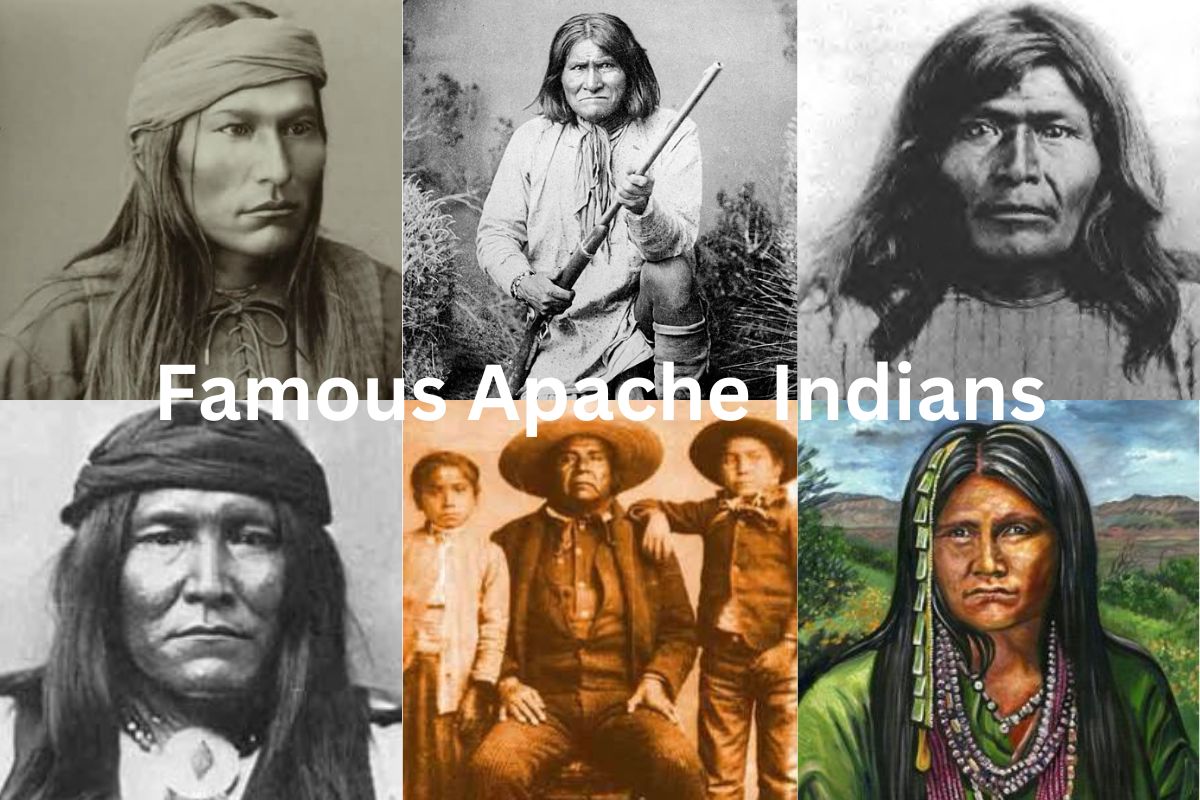The Apache Indians are an Native American tribe with a long history and culture. They lived in North America’s southwestern region, which included present-day Arizona, New Mexico, and parts of Texas and Oklahoma.
The Apaches were famous for their ferocious opposition to American and Mexican immigrants and soldiers, and their warriors became legends in American history.
The Apache tribe was organized into groups, each with its own set of leaders and customs. Geronimo, Cochise, Victorio, and Mangas Coloradas were among the most prominent Apache leaders.
These people are remembered for their bravery, strategic leadership, and resistance to colonizing armies seeking to seize their lands and way of life.
Nowadays, the Apache people maintain their cultural history and customs while pursuing more acknowledgment and sovereignty.
Famous Apache Indians
1. Geronimo
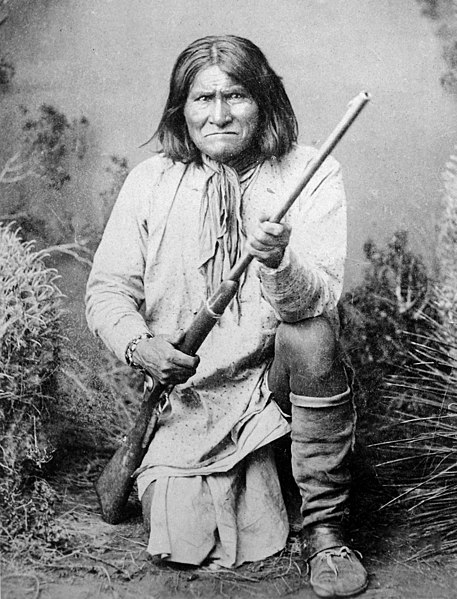
Geronimo (1829-1909) was an Apache warrior and commander who opposed the US government’s efforts to move Native American tribes to reservations. He was born in modern-day Arizona and came quickly to prominence as a warrior.
After his family was massacred by Mexican soldiers in the 1850s, Geronimo launched attacks against Mexican and American settlers. His raids and battles against the US Army lasted decades, and he became one of the most feared and famous Native American commanders of his time.
Also Read: Native Chiefs
Geronimo and his supporters surrendered to the American Army in 1886, after years of battle. He and his people were transferred to reservations in Florida and, subsequently, Oklahoma, where he fought for Native American rights.
Geronimo became associated with bravery and resistance, and he came to represent Native American defiance to the US administration. He has been recognized as a hero and honored by several Native American tribes in the years since his death.
His memory inspires Native Americans to fight for their rights and to speak out against injustice.
2. Cochise
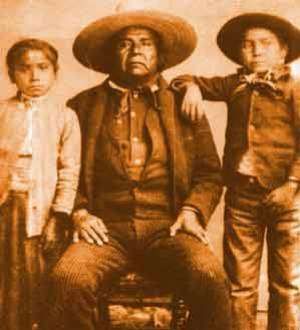
Cochise (about 1805 – June 8, 1874) was a notable Chiricahua Apache leader in the nineteenth century. He was born in Arizona during a period of intense strife between Apache tribes and American and Mexican settlers.
Throughout the 1850s and 1860s, as the United States government began to intrude on Apache territories, Cochise rose to prominence as a tribal leader. He was well-known for his staunch opposition to American military missions as well as his tactical ability as a guerrilla fighter.
Also Read: Cherokee Indians
The Bascom Affair in 1861 was one of Cochise’s most famous skirmishes, in which he and his warriors captured several American soldiers in punishment for the unjust execution of Apache people. This episode triggered a ten-year conflict between the Apaches and the United States.
Notwithstanding this struggle, Cochise desired peace with the United States in his later years. In 1872, he negotiated a compact with American authorities that acknowledged Apache sovereignty over a major area of their traditional territory. Cochise died two years later, but his legend as a brilliant warrior and commander continues on in Apache history.
3. Victorio
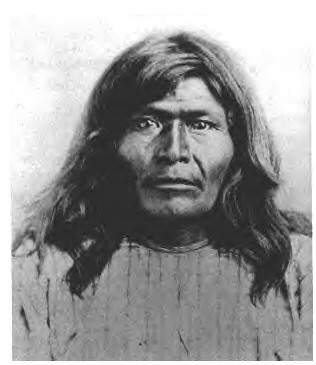
Victorio (c. 1825 – October 14, 1880) was a famous 19th-century chief of the Chihenne band of the Chiricahua Apache tribe. He was born in what is now New Mexico at a time when Apache tribes and American and Mexican immigrants were at odds.
Victorio was well-known for his innovative warfare tactics and ability to elude American forces. In the 1870s, he and his warriors battled against American soldiers in a number of battles, including the Battle of Hembrillo Basin and the Battle of Tres Castillos.
Victorio was a recognized spiritual leader among his people in addition to his military prowess. He feared that American expansion was endangering the Apache way of life and tried to defend his people’s traditional lands and culture.
Victorio was eventually forced to surrender to American soldiers in 1879, despite his attempts. He and his followers were transported to a reservation in New Mexico, but conditions on the reservation were difficult, and many Apaches, including Victorio, left to return to their customary grounds.
Victorio and his soldiers continued to lead assaults against American towns until his death in 1880. His status as a brilliant warrior and spiritual leader has made him a respected figure in Apache history.
4. Mangas Coloradas
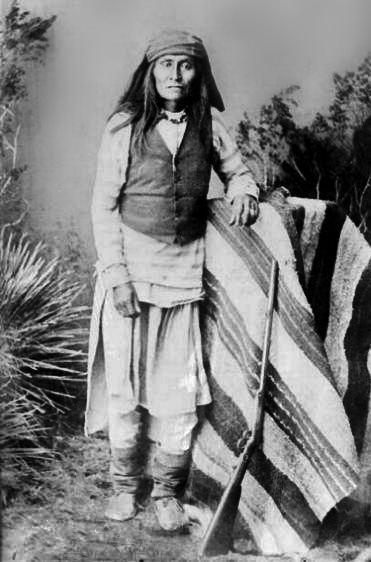
Mangas Coloradas (c. 1793 – January 18, 1863) was a famous Mimbreo Apache chieftain in the nineteenth century. He was born in what is now New Mexico at a time when Apache tribes and American and Mexican immigrants were at odds.
Mangas Coloradas was well-known for both his diplomatic and military abilities. In the 1850s, he signed peace treaties with American authorities, but these treaties were frequently violated by settlers and soldiers who continued to encroach on Apache territories.
Mangas Coloradas became embroiled in skirmishes with American armed forces in the early 1860s. He was taken by American soldiers in 1862 and murdered in captivity the following year.
Mangas Coloradas was regarded as a powerful and just leader who sought to defend Apache sovereignty and way of life by his people. He is still regarded as a beloved person in Apache history, and his legacy continues to inspire Apache leaders today.
5. Naiche
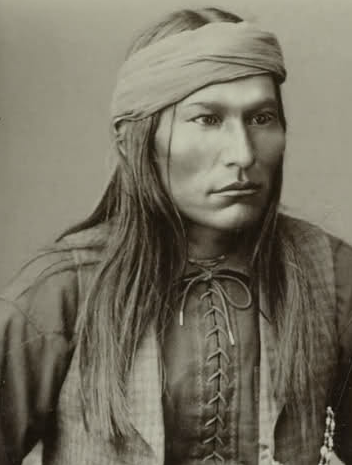
Naiche (c. 1857 – March 16, 1919) was a famous Chiricahua Apache chief in the late nineteenth and early twentieth century. He was the son of Cochise, a legendary Apache leader, and rose to prominence after his father’s death.
Naiche was noted for his warrior prowess and ability to elude US military units. In the late 1800s, he and his followers battled against American soldiers in a series of confrontations, including the Apache Wars and the Geronimo Campaign.
Naiche and other Apache leaders surrendered to American soldiers in 1886 and were transported to reservations in Oklahoma, then New Mexico. Naiche and his followers failed to adjust to life on the reservation, and he led a group of Apaches that fled the reserve to return to their ancestral grounds.
Throughout his life, Naiche advocated for Apache sovereignty and rights. In 1906, he came to Washington, D.C., to testify before Congress on the injustices suffered by the Apache people, and he was a key figure in the fight to win legal acknowledgment of Apache water rights.
Naiche died in 1919, but his legacy as a great warrior and revered leader continues on in Apache history.
6. Lozen
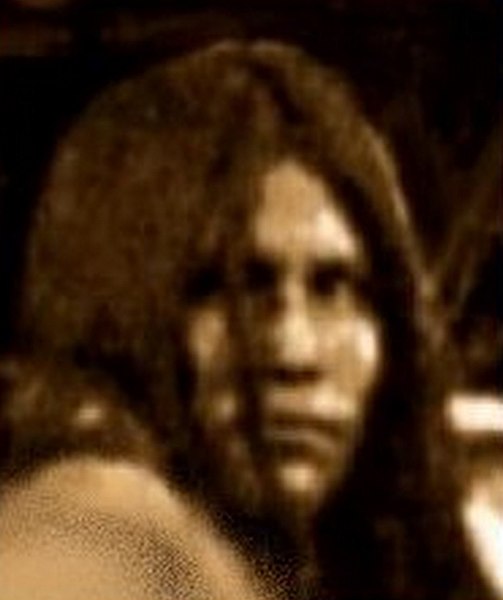
Lozen (c. 1840 – 1889) was a Chiricahua Apache warrior and prophetess in the late nineteenth century. She was Victorio’s sister, another well-known Apache chieftain.
Lozen was famed for her bravery and military skill, as well as her spiritual abilities. She was regarded as a great medicine lady with the ability to converse with the spirit realm.
In the 1870s and 1880s, Lozen fought alongside Geronimo and other Apache chiefs in a series of confrontations against American and Mexican forces. She was well-known for her strategic ability as a scout and messenger, and she was instrumental in several successful attacks on American colonies.
Lozen was eventually apprehended by American soldiers and transported to an Alabama reservation. She fell ill and died in 1889, but her legacy as a great warrior and renowned prophetess lives on to inspire Apaches today. She is well known for saying, “I am a warrior; my heart is a brave heart.”
7. Nana
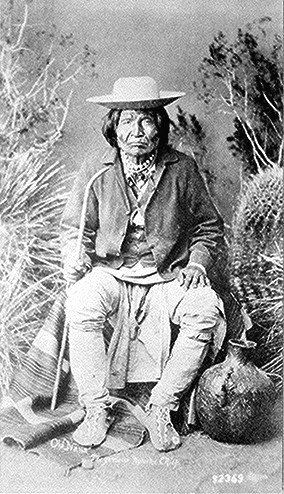
Nana (about 1800s – February 27, 1896) was a Mescalero Apache tribe leader in the nineteenth century. He was born in what is now New Mexico at a time when Apache tribes and American and Mexican immigrants were at odds.
Nana was well-known for his warrior prowess and tactical ability in combat. In the 1870s and 1880s, he led his people in a series of engagements against American armed forces, including the Battle of Tularosa in 1880.
Despite being captured and imprisoned by American forces, Nana fought for Apache sovereignty and rights his entire life. He was a key figure in the effort to gain legal recognition for Apache water rights, and he advocated for the preservation of Apache holy sites.
Nana died in 1896, but his legacy as a superb warrior and respected leader lingers on in Apache history. He will be remembered for his dedication to Apache sovereignty and attempts to save his people’s traditional lands and way of life.
8. Juh
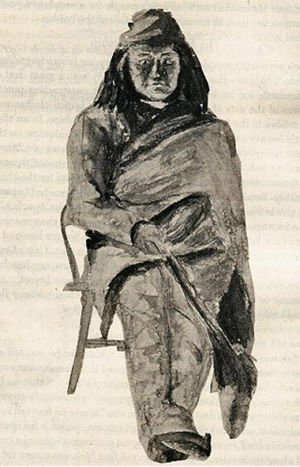
Juh (c. 1825 – February 1883) was a notable leader of the Chiricahua Apache tribe’s Nednhi band in the nineteenth century. He was born in Arizona during a period of intense strife between Apache tribes and American and Mexican settlers.
Juh was well-known for his innovative military tactics and ability to elude American forces. In the 1870s and 1880s, he and his followers battled against American soldiers in a number of confrontations, notably the Battle of Apache Pass in 1862 and the Geronimo Campaign in the 1880s.
Juh was well-known for his diplomatic abilities in addition to his military command. In 1872, he negotiated a peace deal with American authorities that recognized Apache sovereignty over a significant chunk of their traditional territory.
Notwithstanding the accord, American forces continued to pursue Juh and his men. He was eventually apprehended by American forces and transported to an Oklahoma reservation, where he died in 1883.
Juh is remembered as a renowned person in Apache history for his leadership and dedication to preserving his people’s traditional lands and way of life.
9. Alchesay
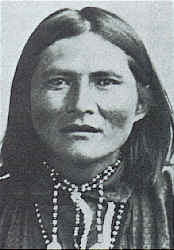
Alchesay (c. 1853 – 1928) was a White Mountain Apache tribe leader in the late nineteenth and early twentieth century. He was born in Arizona during a period of intense strife between Apache tribes and American and Mexican settlers.
Alchesay was well-known for both his military and diplomatic abilities. In the late 1800s, he fought against American military troops, especially during the Geronimo Campaign, but eventually became a scout for the US Army and fought against other Apache bands.
Throughout his military duty, Alchesay remained dedicated to preserving Apache autonomy and rights. He was a key figure in the fight for legal acknowledgment of Apache water rights, and he pushed for the preservation of Apache holy sites.
Alchesay was recognized by the US government for his contributions in addition to his leadership in the Apache community. In 1875, he received the Medal of Honor for his gallantry during a confrontation with the Yavapai tribe.
Alchesay died in 1928, but his legacy as a renowned leader and ardent supporter of Apache sovereignty and rights continues to inspire Apaches today.
10. Gouyen
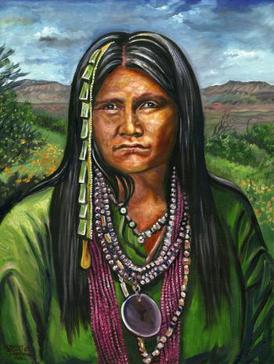
Gouyen (c. 1857 – 1903) was a well-known female warrior and leader of the Chiricahua Apache tribe in the late nineteenth century. She was born in what is now New Mexico at a time when Apache tribes and American and Mexican immigrants were at odds.
In battle, Gouyen was noted for her bravery and strategic ability. In the 1870s and 1880s, she fought alongside her husband, Chief Mangas Coloradas II, and other Apache chiefs against American and Mexican soldiers.
Despite the difficulties she experienced as a female warrior in a male-dominated society, her people admired Gouyen for her bravery and leadership. She was also noted for her diplomatic abilities and efforts to reach an agreement with US officials.
Gouyen and her family were transported to a reservation in New Mexico when the Apache hostilities ended. She died in 1903, but her legacy as a great warrior and revered leader lingers on in Apache history. She is still regarded as a symbol of Apache resistance and sovereignty, and her narrative continues to inspire Apaches today.
11. Dahteste
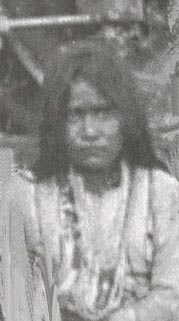
Dahteste (c. 1860 – 1955) was a female Chiricahua Apache warrior and scout during the late nineteenth and early twentieth century. She was born in Arizona during a period of intense strife between Apache tribes and American and Mexican settlers.
Dahteste was a warrior famed for her bravery and skill, as well as her abilities as a scout and messenger. Throughout the 1870s and 1880s, she fought alongside Geronimo and other Apache commanders in a series of confrontations against American and Mexican soldiers.
Dahteste was a respected medicine woman who was reported to be able to heal the ill and wounded in addition to her military prowess. She was well-known for her support of Apache sovereignty and rights, as well as her advocacy for the preservation of Apache lands and ways of life.
Dahteste was later captured by American forces and relocated to a Florida reservation. She then returned to her home state of Arizona, where she died in 1955.
She is still a beloved figure in Apache history, and her reputation as a talented warrior, respected medicine woman, and dedicated advocate for Apache sovereignty continues to inspire Apaches today.
12. Chato
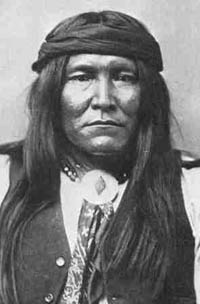
Chato (c. 1854 – 1934) was a Chiricahua Apache tribal leader in the late nineteenth and early twentieth century. He was born in what is now New Mexico at a time when Apache tribes and American and Mexican immigrants were at odds.
Chato was well-known for his military leadership and guerilla fighter tactics. In the late 1800s, he fought against American military troops in a number of wars, notably the Geronimo Campaign.
Notwithstanding his involvement in these confrontations, Chato attempted to make peace with the US in his senior years. He was a key figure in the effort to gain legal recognition for Apache water rights, and he advocated for the preservation of Apache holy sites.
Chato was acknowledged by the US government for his service in addition to his leadership in the Apache community. In 1875, he received the Medal of Honor for his gallantry during a confrontation with the Yavapai tribe.
Chato died in 1934, but his legacy as a great warrior and famous chief continues on in Apache history. He will be remembered for his dedication to preserving Apache sovereignty and his efforts to get greater respect and rights for his people.
13. Flechas Rayadas
Flechas Rayadas was a Chiricahua Apache leader in the late nineteenth and early twentieth century. He was also known as Mangus Coloradas II or Red Sleeve. He was the son of another well-known Apache leader, Mangas Coloradas.
In the late 1800s, Flechas Rayadas took over his father’s leadership and battled against American military troops, particularly during the Geronimo Campaign. He was well-known for his tactical ability as well as his dedication to preserving Apache sovereignty and way of life.
Flechas Rayadas and his men were transported to a reserve in New Mexico after the Apache hostilities ended. He sought to better his people’s living conditions and fought for greater acknowledgement of Apache rights and sovereignty.
Flechas Rayadas passed away in 1915, yet his legacy as a great warrior and revered leader goes on in Apache history. He will be remembered for his dedication to preserving Apache sovereignty and his efforts to get greater respect and rights for his people.
